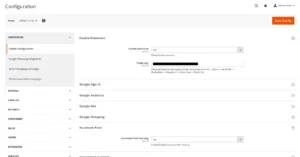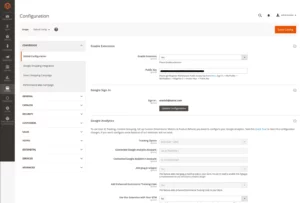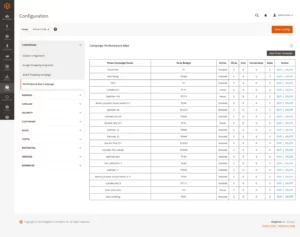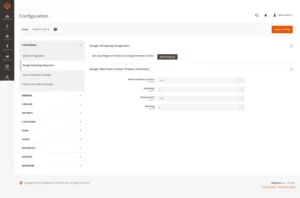This brief guide covers the benefits of Magento 2 and informs how Conversios can help you integrate top-notch Google Analytics service. Also, learn more about the cost and why migrating Magento 2 should not wait.
Introduction
Released in 2015, Magento 2 has made its presence known as a chief contender.
As of 2022, 43,525 business domains have adopted Magento 2, with e-commerce and shopping accounting for 6.27%.
Here is a brief guide to the benefits and advantages of migration to Magento 2 and how Conversios can help you to make the process fast and seamless.
The Present eCommerce Scenario
The post-pandemic eCommerce experience asks for increased mobility and platform-agnosticism. Driven by the reliance on mobility, consumers now expect to be able to surf their target products 24×7 on any device.
Nasdaq says that by 2040, eCommerce will account for 95% of all purchases. This demand calls for a revamping of your eCommerce website.
What is Magento 2?
Simply put, it is an open-source eCommerce software and platform. It also helps businesses author, curate, modify and publish their content.
Magento 2.0 was released in 2015. Adobe acquired Magento in 2018, broadening its prospects and capabilities. After five years, in June 2020, the End of Life for support to Magento 1 was announced.
Currently, powering 154,309 active sites, including sites of renowned brands like HP Inc, Nike, Jack Daniels, Land Rover, etc., Magento holds a 3% market share worth $225 Billion.
Risks of Continuing with Magento 1
Of 185,158 Magento websites, only 62,384 businesses have performed Magento 2 migration. It has multiple dangerous implications, such as-
- Security Risks: Vulnerability to spams and bots attack, security breaches including sensitive customer data.
- No Support: No security patches mean you are solely responsible for your site’s security.
- Lower Customer Satisfaction: Compared to your competitors using Magento 2, your site’s loading speed and user experience are bound to be inferior.
- Extensions: With Magento 1 retired, extension support and plugins will be hard to come by.
Benefits of Magento 2
Migrating to Magento would offer a plethora of technical and user benefits. Here’s a brief list of what you are getting after migration:
-
Better Performance and Speed:
If you aim at the top position on Search Engine Ranking Page (SERP), Google suggests that your website has to load faster. A mere 1-second delay in page response can cost you dearly with a sharp 7% drop in conversions.
Magento 2 comes with advanced PHP support for security, minimised Javascript, and enhanced capacity for browser caching.
These upgrades mean Magento 2 speeds up the website loading by 50% compared to Magento 1. It also enables your website to handle approximately 10 Million page views per hour.
-
Streamlined Checkout:
26% of shoppers will leave when they face a complicated checkout.
Whereas Magento took customers through 6 steps before final checkout, Magento 2 has cut it down to only 2. That is 38% faster.
Also, Magento 2 allows average customers to opt for faster guest checkout.
-
Responsive, SEO-favorable Features
Magento 2 makes Search Engine Optimization (SEO) easy and accessible to anyone. Its Google Rich Snippets/ Micro Data positively impact the SERP rankings.
Additionally, it offers SEO-oriented features, such as image compression, meta tags for categories and content pages, SEO-based URLs, Proper Site Indexing, etc.
-
Google Analytics and Google Ads
On the same note, Magento 2 allows you to integrate the Google Analytics service into your page. Besides that, you can easily apply the Google Ad tool to increase your store’s visibility and specific products.
-
Industry-grade Security
In 2021 alone, cyber attack is responsible for $6 Trillion in damage. According to ESET, 87% of American web users view cyber security as one of their primary concerns.
A concrete security cover for your website is reassuring for your customers and beneficial for your business. As Magento 1 has stopped receiving security updates after reaching the End of Life, it has become vulnerable to cyberattacks.
With Magento 2, you avail yourself the strong encryption that safeguards stored data and customers’ privacy from bots and cyber attacks.
-
Built-in Caching
Caching promotes faster loading of websites. Magento 2’s inbuilt full-page caching capability improves user experience by taking less time. Also, it is equally effective in storing static content.
-
Mobile-friendliness
In 2021, mobile eCommerce accounted for 54% of total eCommerce sales. Magento 2 is the right choice in this scenario as it supports displaying content on mobile devices like smartphones.
As users demand mobility in terms of their browsing experience, online shops with optimised websites delivering fast and customised results for mobile users are more likely to perform better.
-
More Payment Gateways
To satisfy mobile consumers’ needs, Magento 2 has integrated multiple payment gateways like PayPal and Braintree for ease of business.
-
Database Divison
Compared to Magento 1, the modern version has divided its database into three simple categories- Product Data, Check-Outs, and Orders. The segmentation helps ease database overload and keeps the front-end customer user experience neat.
-
Decluttered Admin Panel
Magento 2 upgraded its admin panel to make store management more user-friendly. It allows setting up new products with 4x more speed, impacting the ease of delivering eCommerce services
-
Quick Product Media Upload
With a significant boost to its Content Management System (CMS) capability, Magento 2 permits you to upload photos, videos, and other media to accompany listed products. It stokes users’ curiosity and promotes conversion prospects.
Apart from the benefits above, you also receive consistent updates and security patches while modernising your existing tech stack and building a scalable eCommerce business simultaneously.
Migration Challenges
However, migrating from a loaded Magento to the modern version may not be a smooth experience. There are several risks that you need to consider and manage accordingly. Such as,
- Upset SEO ranking and lesser traffic
- Ux/UI compatibility issues
- Loss of customer login data
- Data migration problems
- Security breaches in the process
Meeting the Challenges: Automate using Conversios
Founded in 2016, Conversios is a lightweight WordPress plugin and a preferred partner of eCommerce platforms, enabling businesses to automate google Analytics and Google Ads for faster scalability.
Here’s how it can help you make the complex migration from Magento to Magento 2 a fluid and loss-less process.
Conversios’ Helpful Features:
As a plugin, Conversios uniqueness is its enhanced support for WooCommerce.
- Accessibility: accessible features let you harness the insights of Google Ads and Analytics to promote your eCommerce site’s performance.
- Complete Tracking Capability: With Google Analytics 4 support, Shopping behaviour reports, and free Google Analytics Audit, let Conversios take care of the UX/UI issues.
- Dynamic Remarketing Tags: By enabling active remarketing tags for eCommerce events, you run relevant, targeted ads to the consumers.
- Google Shopping Campaigns: By combining a Google Ad account with a Google Merchant Center account, Conversios lets you run effective campaigns in Google Shopping.
- Product Feed Management: Conversios completely automates the Google Shopping experience with SEO, having the ability to run campaigns in auto mode. It can also create valuable product feeds in the merchant centre account.
- Auto Sync: Every 25 days, it can automatically sync the products feed with the Google Merchant Center.
Do not wait to migrate to Magento 2. Join the force of 50000 + merchants, and use Conversios- the best free plugin
Screenshots from our application:
-
Dashboard
-
Setting Global Config. and GA
-
Running Pmax campaigns
Learn more about Pmax campaign here -
Product Sync through GMC
Read more about Product Sync and GMC here
Read more about how it can help you in the recent Google Ad campaign.
Schedule a quick demo, to understand our product and service




